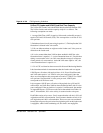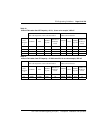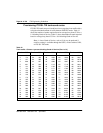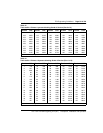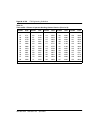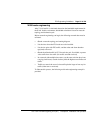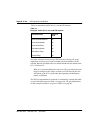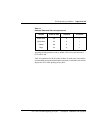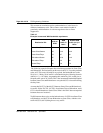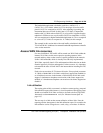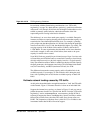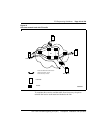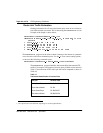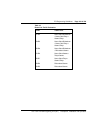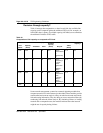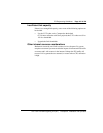
Page 100 of
378
ITG Engineering Guidelines
553-3001-202 Standard 1.00 April 2000
This assumes no correlation and no synchronization of voice bursts in
different simultaneous calls. This assumes some statistical model of
granularity and distribution of voice message bursts due to silence
suppression.
The following example illustrates the calculation procedure for Santa Clara
and Richardson. The total traffic on this route is 60 CCS. To use the preferred
codec of G.729 Annex AB with 30 ms payload, the bandwidth use on the
WAN is 11.2 kbit/s. WAN traffic is calculated using the following formula:
(60/36)*11.2 = 18.7 kbit/s. Augmenting this number by 30% would give us
the peak traffic rate of 24.3 kbit/s. This is the incremental bandwidth required
between Santa Clara and Richardson to carry the 60 CCS voice traffic during
the busy hour.
Assume that 20 CCS of the 60 CCS between Santa Clara and Richardson is
fax traffic. Of the 20 CCS, 14 CCS is from Santa Clara to Richardson, and 6
CCS is from Richardson to Santa Clara. What is the WAN data rate required
between those two locations?
Traffic between the two sites can be broken down to 54 CCS from Santa Clara
to Richardson, and 46 CCS from Richardson to Santa Clara, with the voice
traffic 40 CCS (=60-20) being the two-way traffic.
Table 16
Example: Incremental WAN bandwidth requirement
Destination Pair
CCS on
WAN
WAN
traffic in
kbit/s
Peaked WAN
traffic (x1.3) in
kbit/s
Santa Clara/Richardson 60 18.7 24.3
Santa Clara/Ottawa 45 14.0 18.2
Santa Clara/Tokyo 15 4.7 6.1
Richardson/Ottawa 35 10.9 14.2
Richardson/Tokyo 20 6.2 8.1
Ottawa/Tokyo 18 5.6 7.3



